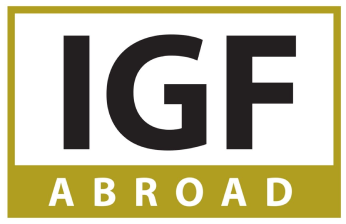About
Europe is globally recognized for its outstanding education system, which has consistently ranked among the best in the world. Known for its focus on holistic development—nurturing the intellectual, emotional, and physical abilities of students—Europe’s education system is designed to cultivate individual strengths while promoting a well-rounded educational experience. This makes Europe a highly desirable destination for international students seeking quality education in a diverse and culturally rich environment. Below is a detailed exploration of the various aspects of the European education system, from elementary and secondary schools to post-secondary institutions, and the unique features that contribute to its global acclaim.
Why Choose Europe for Education?
Europe offers a plethora of advantages for students, both domestic and international, looking to pursue higher education. Some of the key reasons why Europe stands out as a top educational destination include:
- Diverse Educational Institutions: Europe is home to thousands of universities and higher education institutions offering a vast range of programs at various levels of study. From business and engineering to law, medicine, and the arts, students can choose from an extensive array of disciplines to match their academic and career aspirations.
- World-Class Quality of Education: European universities are known for their rigorous academic standards, research-driven learning, and emphasis on critical thinking and innovation. Degrees obtained from European institutions are highly regarded worldwide.
- Cultural Diversity and Global Exposure: With students from all over the world, European campuses foster a multicultural environment, offering students the opportunity to build global networks and develop cross-cultural communication skills.
- Affordability and Scholarships: Many European countries offer affordable or even free education for both local and international students, along with numerous scholarships, grants, and financial aid opportunities.
- Pathways to Employment and Immigration: European countries often provide pathways for international students to stay and work after graduation, offering visas and post-study work permits to help students transition into their professional careers.
Structure of the European Education System
The European education system is structured to provide a seamless learning experience from early education to higher education. While education systems may vary slightly from one country to another, there are commonalities that create a unified framework for students across Europe.
- Early Childhood Education (Preschool): Children aged 3 to 6 are introduced to basic learning concepts, socialization, and early development skills.
- Primary Education (Elementary School): Starting at age 6 or 7, primary education typically lasts for four to six years, focusing on core subjects like mathematics, language, science, and social studies.
- Secondary Education (High School): Secondary education is divided into lower secondary (compulsory education) and upper secondary (preparing for higher education or vocational training). Students can opt for general education or vocational tracks, depending on their future goals.
- Higher Education (Universities and Colleges): Higher education follows the Bologna Process, creating a harmonized degree structure across Europe. Students can pursue bachelor’s (3-4 years), master’s (1-2 years), and doctoral degrees (3-4 years) in universities, polytechnics, or applied science institutions.
This structured pathway allows for mobility within the European education area, making it easier for students to transfer credits and pursue advanced degrees across borders.
Top-Ranked European Universities
Europe is home to some of the most prestigious universities in the world, known for their academic excellence, research output, and global reputation. Here are some of the top-ranked universities in Europe:
- University of Oxford (UK): One of the world’s oldest and most prestigious universities, renowned for its academic rigor and research excellence.
- University of Cambridge (UK): Known for its outstanding faculty, rich history, and contribution to global research and development.
- ETH Zurich (Switzerland): A leader in technology, science, and engineering education, consistently ranked among the top universities in the world.
- Imperial College London (UK): Renowned for its science, technology, engineering, and medicine (STEM) programs.
- University of Copenhagen (Denmark): A top university known for research and a focus on sustainability and global issues.
- University of Amsterdam (Netherlands): Recognized for its research-driven approach and international outlook.
- Sorbonne University (France): A prestigious institution for humanities, sciences, and the arts.
- Heidelberg University (Germany): Germany's oldest university, known for its academic and research excellence.
These universities are known for producing graduates who are leaders in their respective fields, with degrees that hold global recognition and prestige.
The Cost of Studying in Europe
The cost of education in Europe varies depending on the country, type of institution, and program of study. However, compared to other global destinations like the United States or Australia, Europe is often seen as an affordable option for international students. Here’s a breakdown of costs:
- Tuition Fees:
- Free or Low-Cost Tuition: Countries like Germany, Norway, and Finland offer free or low-cost education to both local and international students.
- Affordable Tuition: Countries like France, Italy, and Spain charge moderate tuition fees, usually ranging from €1,000 to €5,000 per year for non-EU students.
- Private Universities: Private universities tend to have higher fees, which can range from €5,000 to €20,000 per year, depending on the program.
- Living Costs:
- Living expenses vary by country and city. For example, living in cities like Paris or London can be more expensive than living in smaller towns or cities in Germany or the Netherlands.
- On average, students can expect to spend €700 to €1,200 per month on accommodation, food, transportation, and personal expenses.
- Financial Aid and Scholarships:
- Many European governments, universities, and private organizations offer scholarships, grants, and financial aid to support international students. Examples include the Erasmus+ program, DAAD Scholarships (Germany), and Chevening Scholarships (UK).
Post-Graduation Opportunities and Immigration
Europe offers numerous post-graduation opportunities, making it an attractive destination for students seeking career advancement and long-term settlement. Here’s an overview of the opportunities available to international students after completing their studies:
- Post-Study Work Visas:
- Many European countries, including Germany, the Netherlands, and Ireland, offer post-study work visas, allowing students to stay and work for up to 1-2 years after graduation.
- The UK offers a "Graduate Route" visa, allowing students to stay and work for two years after graduation.
- Employment Opportunities:
- Europe is home to multinational companies and industries with high demand for skilled professionals. Students who graduate with degrees in technology, engineering, healthcare, and finance are often in high demand.
- Many universities have career support services, internships, and partnerships with leading companies to help students transition into the job market.
- Pathways to Permanent Residency:
- Some European countries provide clear pathways to permanent residency for skilled graduates. For example, Germany allows graduates to apply for permanent residence after working for a certain number of years.
- Countries like the Netherlands and Portugal offer "Highly Skilled Migrant" visas, making it easier for international students to remain and work in the country.













